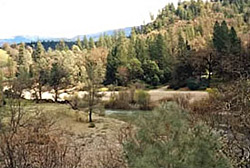Contact EPA Pacific Southwest Water Division
Pacific Southwest, Region 9
Serving: Arizona, California, Hawaii, Nevada, Pacific Islands, Tribal Nations
Monitoring, Assessment and TMDLs
| Monitoring, Assessment and Total Maximum Daily Loads (TMDL) Quick Finder | |||
|---|---|---|---|
| Monitoring & TMDLs Home 303(d) lists EPA-established TMDLs | EPA-lead TMDLs: Completed Monitoring Arizona TMDLs | California TMDLs Hawai'i TMDLs Nevada TMDLs | Pacific Islands TMDLs TMDL Contacts |
Total Maximum Daily Loads (TMDLs)
The Clean Water Act requires states, territories, and authorized tribes to develop lists of impaired waters. These are waters that are too polluted or otherwise degraded to meet the water quality standards set by states, territories, or authorized tribes. The law requires that these jurisdictions establish priority rankings for waters on the lists and develop "Total Maximum Daily Loads" (TMDLs) for these waters. A TMDL is a calculation of the maximum amount of a pollutant that a body of water can receive and still safely meet water quality standards.
National Links

EPA, states, and tribes conduct intensive monitoring, assessment, and watershed planning activities to:
- track water quality,
- identify polluted waters, and
- develop pollution control plans called "total maximum daily loads," or TMDLs.
The Clean Water Act requires states and territories to issue water quality status reports every two years. These reports identify water quality trends, prioritize polluted waters, and target waters for TMDL development. TMDLs identify the pollutant load reductions that are necessary from point and nonpoint sources and guide implementation work by federal, state, tribal, territorial, and local water quality protection programs.
EPA recommends the preparation of an integrated water quality monitoring and assessment report (Integrated Report) that includes all the information required in the Section 305(b) and 303(d) reports (for more information, see the Guidance for Assessment, Listing and Reporting Requirements). Federal regulations ![]() describe Section 305(b) and Section 303(d) reporting requirements in greater detail.
describe Section 305(b) and Section 303(d) reporting requirements in greater detail.
States and territories in the Region 9 (Pacific Southwest) maintain programs that conduct water quality monitoring, develop assessment reports, and develop TMDLs for impaired waters. More information about individual State and Territory programs can be found at the links listed above.
Guidance for the 2010 Integrated Report is now available.
Federal regulations at 40CFR130![]() describe Water Quality Planning and Management requirements, Section 305(b) and Section 303(d) reporting requirements in greater detail.
describe Water Quality Planning and Management requirements, Section 305(b) and Section 303(d) reporting requirements in greater detail.
Programs & Resources
Region 9 monitoring, assessment, and TMDL planning by state or territory
- Arizona
- California
- Hawaii
- Nevada
- Pacific Islands
(American Samoa, Commonwealth of Northern Mariana Islands, Guam) - California Toxics Rule (CTR)
- Water Quality Standards
- Monitoring, Assessment and Reporting
- Biological Indicators
State and EPA TMDL Program Contacts
Impaired Waters Lists/TMDLS:
Assessments
- EMAP-West (historical)
- Regional EMAP (historical)
- Dioxins in San Francisco Bay
- Mercury
